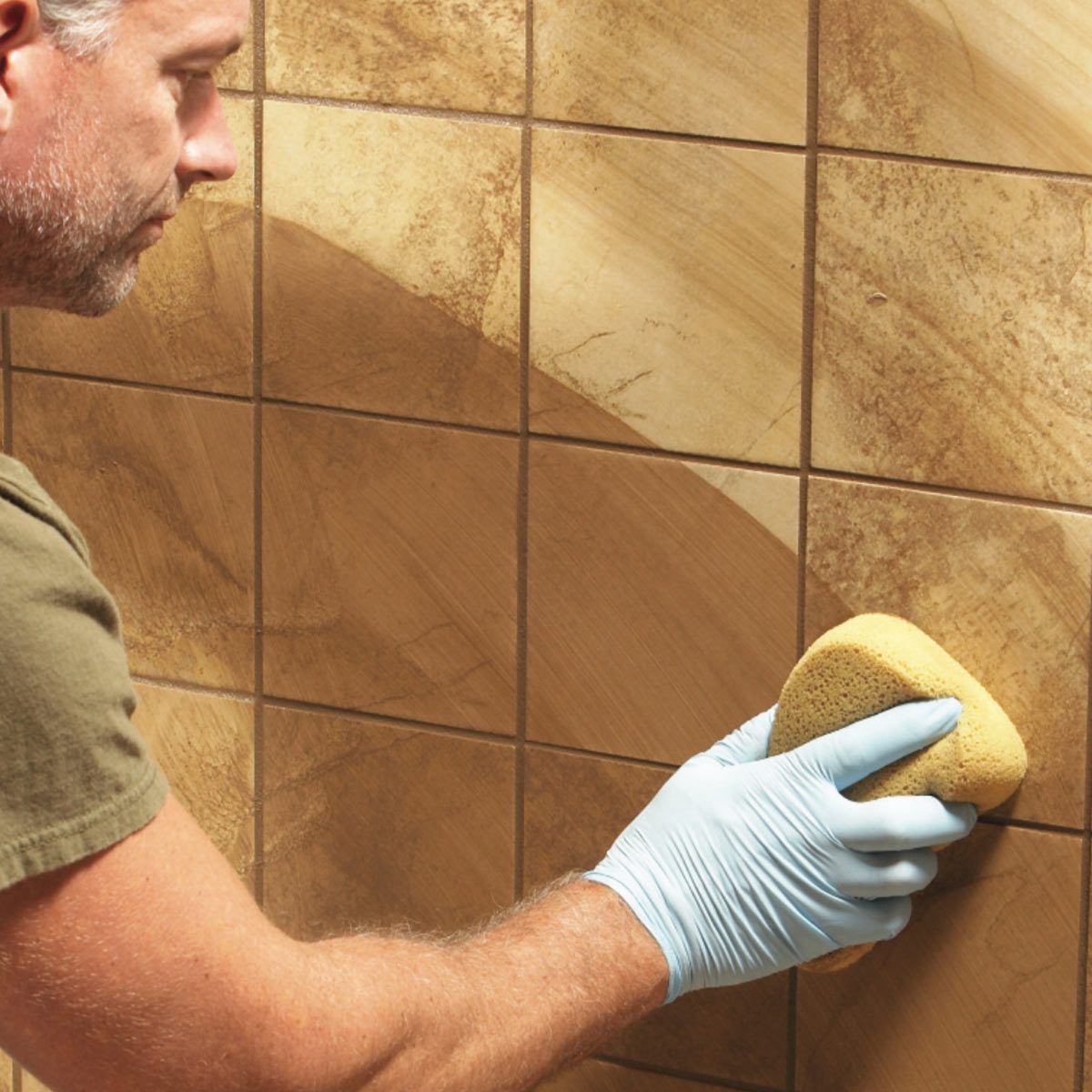Picture this: You’ve painstakingly chosen the perfect tiles for your bathroom floor, carefully measured and laid them, and now you’re staring at a pile of grout, ready to finish the project. But then, a nagging question pops into your mind: “Can I use this unsanded grout on my floor tiles?” It’s a valid question, especially for DIY enthusiasts who want to make sure they’re using the right materials for the job. Unsanded grout might seem like a simple, convenient option, but it can actually be a recipe for disaster if not used correctly.
/grout-being-applied-to-tiles-using-a-grout-spreader-81992491-582b44cb3df78c6f6aa728e4.jpg)
Image: www.thespruce.com
This article will dive into the world of grout, exploring the pros and cons of using unsanded grout on floor tiles, and ultimately empowering you to make an informed decision about your bathroom remodel. By understanding the nuances of grout types, tile sizes, and the specific needs of your project, you can confidently choose the right grout for a long-lasting, beautiful finish.
Understanding Grout: The Glue That Holds Your Tiles Together
Grout, the unsung hero of tile installations, serves more than just a decorative purpose. It’s the glue that binds your tiles together, providing structural stability and protecting against water damage. Choosing the right grout is crucial for achieving a seamless and durable finish.
The Two Main Grout Types: Sanded vs. Unsanded
There are two main types of grout available: sanded and unsanded. The difference lies in the presence of sand particles, which give sanded grout its strength and ability to fill larger gaps.
-
Sanded grout: This type contains fine sand, making it ideal for filling gaps wider than 1/8 inch. The sand particles act as filler, adding strength and durability to the grout, preventing cracking and shrinkage. Sanded grout is often preferred for flooring applications, where tiles may move slightly due to foot traffic.
-
Unsanded grout: This type lacks sand and is better suited for narrower gaps of less than 1/8 inch. It’s generally preferred for wall tile installations, as it creates a smoother, more refined finish.
Can You Use Unsanded Grout on Floor Tiles?
The short answer? It’s not recommended.
While it might seem tempting to use unsanded grout on your floor tiles for a smoother look, it’s not the best choice for several reasons:
-
Shrinking and cracking: Unsanded grout isn’t designed to withstand the pressure and movement of foot traffic. Over time, it can shrink, crack, and crumble, creating unsightly gaps and leaving your floor vulnerable to water damage.
-
Lack of strength: The absence of sand particles in unsanded grout makes it less durable than its sanded counterpart. It’s less resistant to abrasion and can easily be damaged by foot traffic or heavy objects.
-
Difficulty with cleaning: The smooth, ungritted surface of unsanded grout makes it more susceptible to staining and dirt buildup. Cleaning can become a chore, especially in high-traffic areas like bathrooms and kitchens.

Image: www.familyhandyman.com
When Unsanded Grout Might Be an Option
While it’s generally not recommended for floor tiles, there are a few instances where unsanded grout may be suitable:
-
Small tiles: If you’re using small floor tiles with narrow grout lines, unsanded grout may be acceptable. However, it’s crucial to assess the movement potential of the floor tiles and the amount of foot traffic the area receives.
-
Interior Walls: Unsanded grout shines on interior walls where its smooth finish enhances the polished look of the tiles and minimizes dirt accumulation. It’s ideal for areas with less wear and tear, such as bathroom walls or kitchen backsplashes.
-
Specific Tile Types: In some cases, unsanded grout may be better suited for specific tile types, such as glass or mosaic tiles.
Choosing the Right Grout for Your Project
Ultimately, choosing the right grout for your project depends on several factors:
-
Tile size: Smaller tiles generally require unsanded grout, while larger tiles need sanded grout to fill the wider gaps.
-
Traffic level: Areas with heavy foot traffic require sanded grout for durability and strength.
-
Grout line width: The width of your grout lines determines whether you need sanded or unsanded grout.
-
Aesthetic preference: Consider the desired look and feel of your tile installation. Sanded grout provides a more rugged, textured finish, while unsanded grout delivers a smooth, polished appearance.
Can I Use Unsanded Grout On Floor Tiles
https://youtube.com/watch?v=o7TIk3sZBkw
The Bottom Line: It’s Not Just About Aesthetics
Choosing the right grout is about more than just achieving a smooth finish or a particular aesthetic. It’s about ensuring the longevity and durability of your tile installation. Sanded grout, with its added strength and resilience, is generally the preferred choice for floor tiles, especially in areas with heavy foot traffic. However, if you’re working with smaller tiles, minimal movement, and low traffic, unsanded grout might be an acceptable option.
Always do your research, consult with a professional, and choose the grout that best meets the needs of your project. You’ll thank yourself in the long run for making the right choice.






